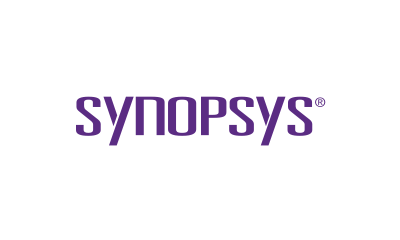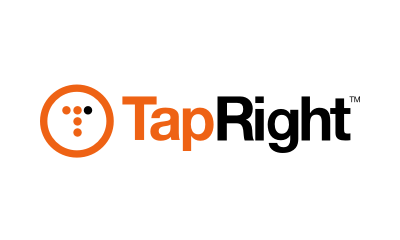14 Common Misconceptions About Artificial Intelligence
Posted by Tech.us Category: AI, Artificial Intelligence, Machine Learning
Artificial intelligence is one of the most useful yet misunderstood topics in the world today. There are countless myths and misconceptions about what AI is and what it can do. In this blog post, we will dispel some of the most common myths about AI.
1. AI Can Learn On Its Own
People may think that AI or a finished ML can learn things without assistance. However, the truth is that scientists still need to prepare data, frame the problems, provide the appropriate datasets, and more, essentially giving the AI plenty to work with.
Most importantly, humans need to continually update their software to allow new data and knowledge to integrate into every learning cycle.

2. AI Doesn’t Need Humans
Contrary to what we assume, AI-based systems depend on humans to operate them. In fact, a massive chunk of their learning comes from the data they gather from humans performing the needed operations.
To this day, many AI systems focus primarily on repetition and rules, which keeps their skillsets very narrow.

3. AI Systems Are Dangerous
Fortunately, ML (machine learning) and AI models aren’t any more dangerous than other types of technology that we already use in our daily lives.
Most of these systems are still quick basic models designed only to follow instructions. These can involve analyzing historical data or solving a specific problem, such as formulating a strategy to engage a target audience.

4. ML And AI Are Interchangeable Because They Are The Same
Machine learning is a subclass of artificial intelligence; they are not the same thing. While ML is a data acquisition strategy that requires rigorous training, AI is a term that refers to a vast class of techniques related to computer engineering. AI can include rule-based systems, ML, natural language processing (NLP), and optimization techniques.

5. AI Will Take Over Our Jobs
While AI systems can do some jobs, only an estimated 8% of companies actually plan on using AI systems to replace humans for specific jobs.
Furthermore, the addition of AI is more likely to provide new jobs instead of taking them away since more humans will be needed to develop and design new AI-related businesses.
Historically speaking, technological advancements have always diminished jobs at first only to boost job creation later by creating new sectors and industries.

6. We Have Reached The Peak Of AI
While some of us may think that we’re getting closer to the science fiction types of robots that we see in movies, this couldn’t be further from the truth.
According to Gary Marcus, a professor at NYU, humankind may have achieved things with AI that we wouldn’t have imagined ten years ago, but at the most, we’ve only just scratched the surface. And while we’ve made strides in speech recognition, today’s AI simply can’t perform to the level that creators aspire to reach.

7. Telling The Difference Between AI And Humans Is Easy
This may be the biggest misconception on the list. While people think they will always be able to tell an AI from a human being, AI systems are already used to write sports stories, weather reports, and financial news.
Even some of the biggest names in the industry, such as The Washington Post and the Associated Press use AI for writing news stories.

8. We Don’t Need AI In Times Of A Pandemic
AI systems are becoming an essential part of business continuity, and cost optimization as COVID-19 ensues.
This fact contradicts the misconception that AI is a luxury we don’t need at times of struggle and uncertainty. The truth is that AI helps us to build revenue, especially during an emergency. They help analyze data more efficiently, improve customer interactions, provide early warnings for any disruptions, and automate decision-making.

9. AI Is 100% Objective
Everyone knows that AI technology works off data apart from other input types from its human creators. However, because everyone is biased in one way or another, data is often biased, resulting in biased AI.
There are no solutions that will completely take away bias, but scientists do their best to keep it at the minimum level.

10. AI Can Only Perform Mundane Jobs
This is another misconception. For example, the healthcare industry is already using AI for imaging purposes, where an AI-based chest X-ray application can detect disease faster than radiologists.
In the insurance and financial industry, robot advisors are already used to detect fraud and manage wealth, making these processes much more efficient.

11. My Business Doesn’t Need AI Systems
Every organization (no matter how big or small) should consider working with AI to see its potential impact and find out how such technology can be applied to solve problems.
In most cases, exploring the use of AI paves the way to automation in many businesses, placing them at a competitive advantage.

12. AI Work Exactly Like Our Brains
This is another common mistake that’s widely accepted to be true. However, as mentioned above, we are still a long way from what we envision AI to be.
An AI can’t understand its surroundings as humans do, nor can it play an instrument or read a book. AI is still at its infancy stages, and it will be decades before we even see a glimpse of what may one day be a fully human-like AI.

13. AI Is A Brand New Technology
While the hype behind AI technology has only been observed recently, AI isn’t new, nor is it a few years old. AI can be traced back to the middle of the 20th century.
As early as the Second World War, Alan Turing, a computer scientist, and English mathematician started to document his idea of an intelligent machine. In 1956, John McCarthy, a computer scientist, coined the term “Artificial Intelligence” at the Dartmouth Conference.

14. AI Is Hard For Regular People To Understand
For those who don’t have a background in computer science, it may be easy not to try and understand AI, assuming that it is best left to the professionals. Fortunately, AI processes are simple, and just about anyone can create their own AI with just two to three lines of code. AI works like a processor that allows you to feed it data to produce your desired results. Anyone who dedicates a bit of their time to learning its basics will be able to grasp how AI works.

Get In Touch With Us
If you’re a business owner, you know how difficult it is to keep up with the latest technology. You need to be able to provide your customers with an excellent experience and stay ahead of the curve. But that can be hard when you don’t have time for research or development.
That’s where we come in! We build artificial intelligence, SaaS, and mobile apps for businesses so they can focus on what matters most – their business. Our team has years of experience building AI products that are user-friendly and scalable across platforms. We take care of all the heavy lifting so our clients can get back to doing what they do best – running their companies!
Whether you want to build software products, mobile apps, or AI, we have a solution for every type of business out there. Get in touch today and let us help you grow your company by leveraging cutting-edge technology like AI!
Click here to contact us and find out Tech.us can help your business thrive through AI and innovative technology!


Trusted by:






We are a team of technology experts who are passionate about what we do. We LOVE our customers. We LOVE technology. We LOVE helping you grow your business with technology.
Our Company
Our Services
Talk To Us
We are a team of technology experts who are passionate about what we do. We LOVE our customers. We LOVE technology. We LOVE helping you grow your business with technology.
